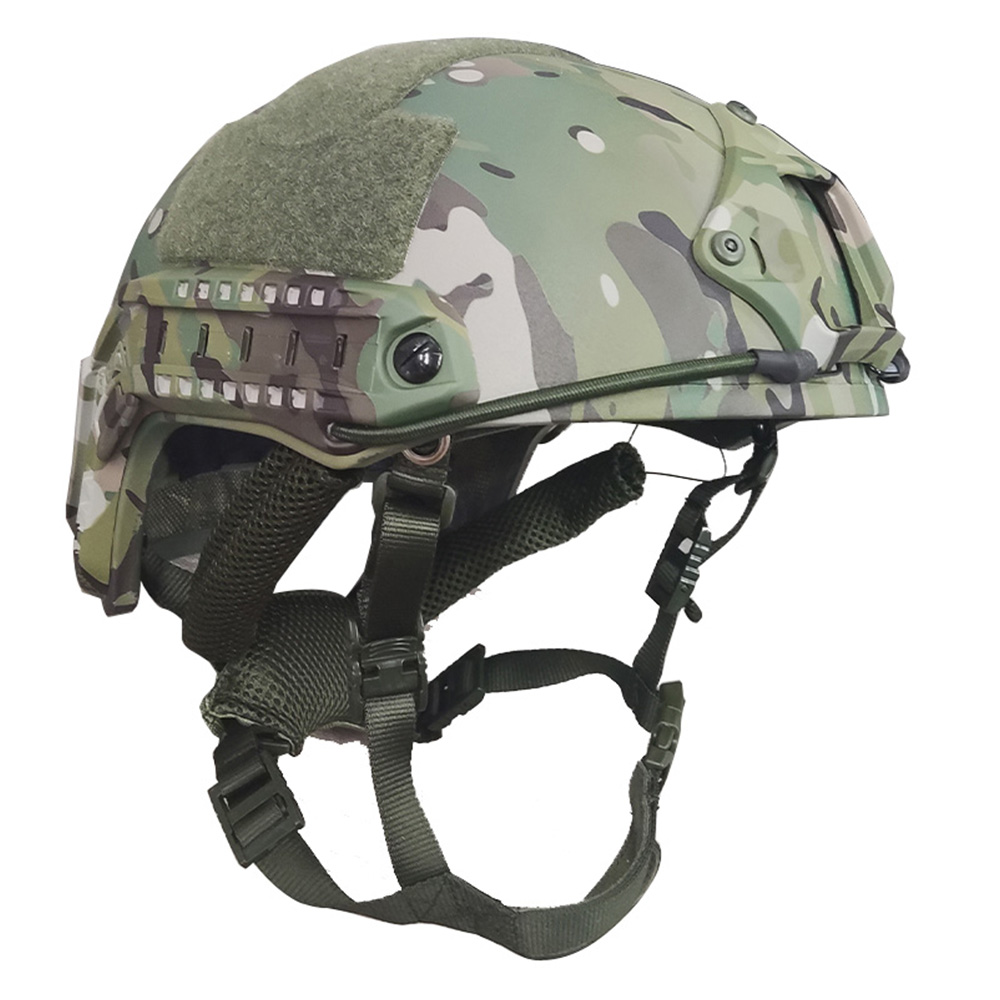Writer: admin Time: 2023-08-17 17:30:29 Browse:
Military helmets are critical components of a soldier's protective gear, designed to shield against various threats on the battlefield. This article explores the different ballistic levels of military helmets, the materials used in their construction, and how they provide the necessary protection for servicemen and women in combat situations.
Ballistic Protection Levels:Military helmets are classified into different ballistic protection levels based on their ability to withstand specific threats. The most common levels for military helmets are Level IIIA and Level III. Level IIIA helmets provide protection against handgun rounds, while Level III helmets offer defense against high-velocity rifle rounds, such as 7.62mm NATO.
Materials and Design:To achieve the required protection levels, military helmets are constructed using advanced materials, including aramid fibers, ballistic ceramics, and composite laminates. These materials are chosen for their lightweight yet highly effective ballistic resistance, allowing soldiers to move swiftly while remaining adequately protected.
Enhanced Features:Modern military helmets often incorporate additional features to enhance their functionality and versatility. These may include accessory rails for attaching night vision devices and other mission-specific equipment, as well as suspension systems that ensure a comfortable fit and reduce the impact of concussive forces.
Testing and Certification:Military helmets undergo rigorous testing to ensure they meet the specified ballistic protection levels and performance standards. These tests involve subjecting the helmets to simulated ballistic impacts and environmental conditions to assess their durability and effectiveness.

Adaptability and Interoperability:Military helmets are designed to be compatible with other essential protective gear, such as ballistic eyewear, face shields, and communication systems. This interoperability ensures that soldiers have a comprehensive and seamless protective ensemble, enhancing their capabilities and survivability on the battlefield.
Conclusion:Military helmets are classified into different ballistic protection levels, primarily Level IIIA and Level III, based on their capacity to shield against specific ballistic threats. The use of advanced materials and thoughtful design allows these helmets to provide essential protection while remaining lightweight and adaptable for soldiers in combat situations. Rigorous testing and certification ensure their reliability, instilling confidence in the men and women who wear them while serving their countries on the front lines.